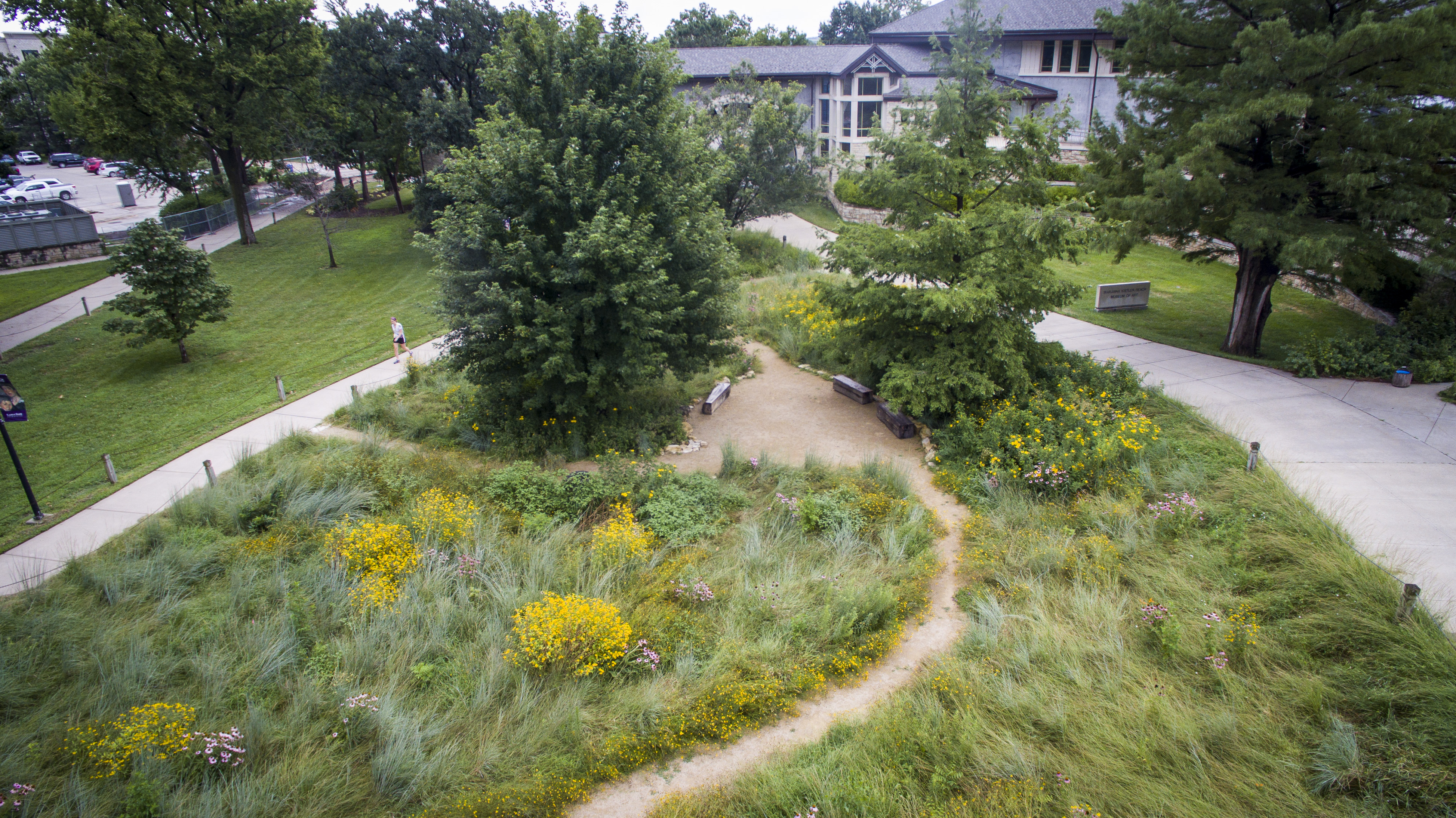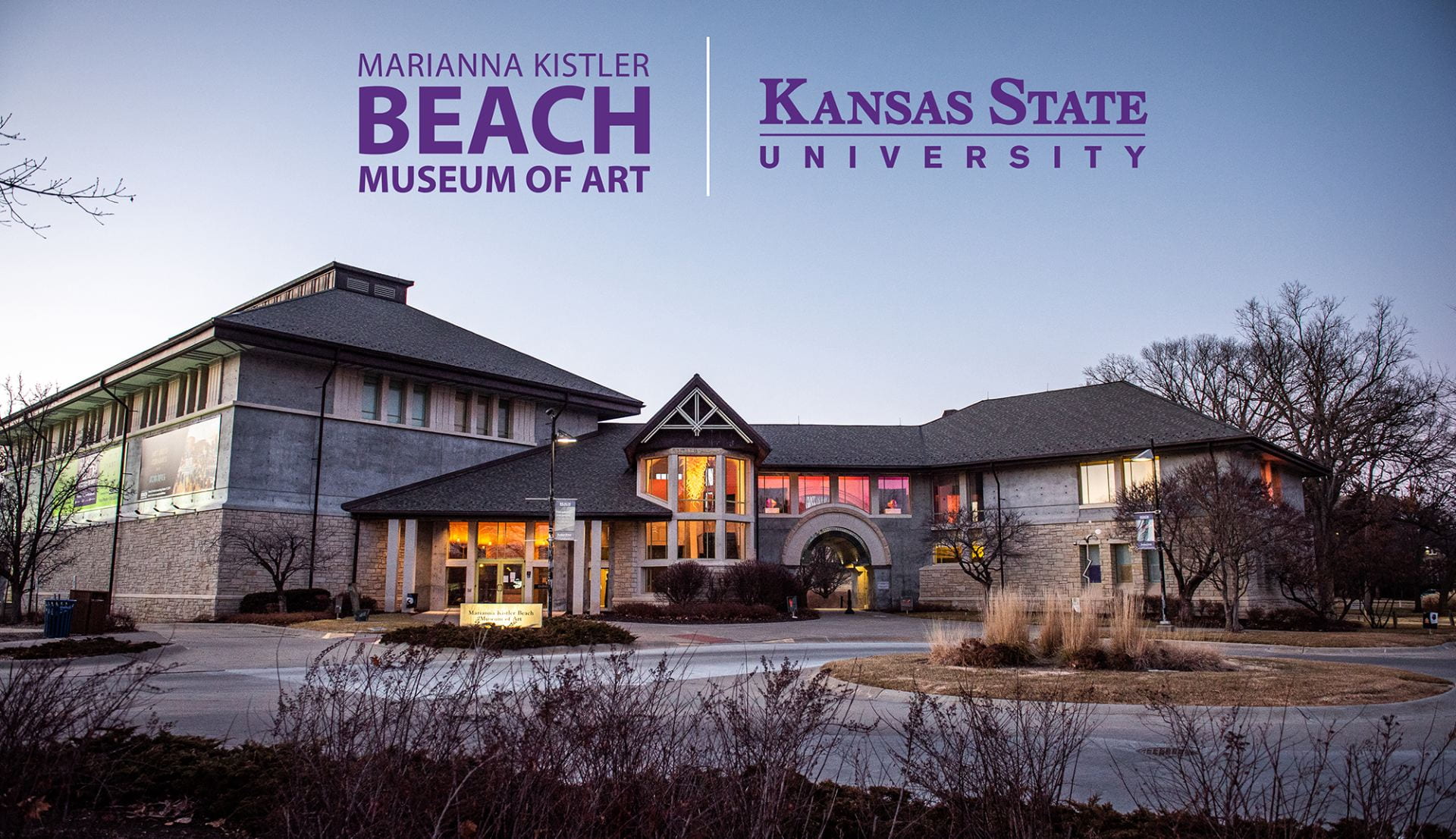During the 2021-2022 season, the Prairie Studies Initiative at the Beach Museum of Art continues to inspire the museum’s work. In the Mary Holton Seaton West Gallery, artworks from the collection represent the prairie in varied ways, from Jim Richardson’s remarkable photographs of the roots of native grasses and wildflowers to Joe DiGiorgio’s pointillist evocation of a wheat field. Visit the museum to enjoy these artworks.
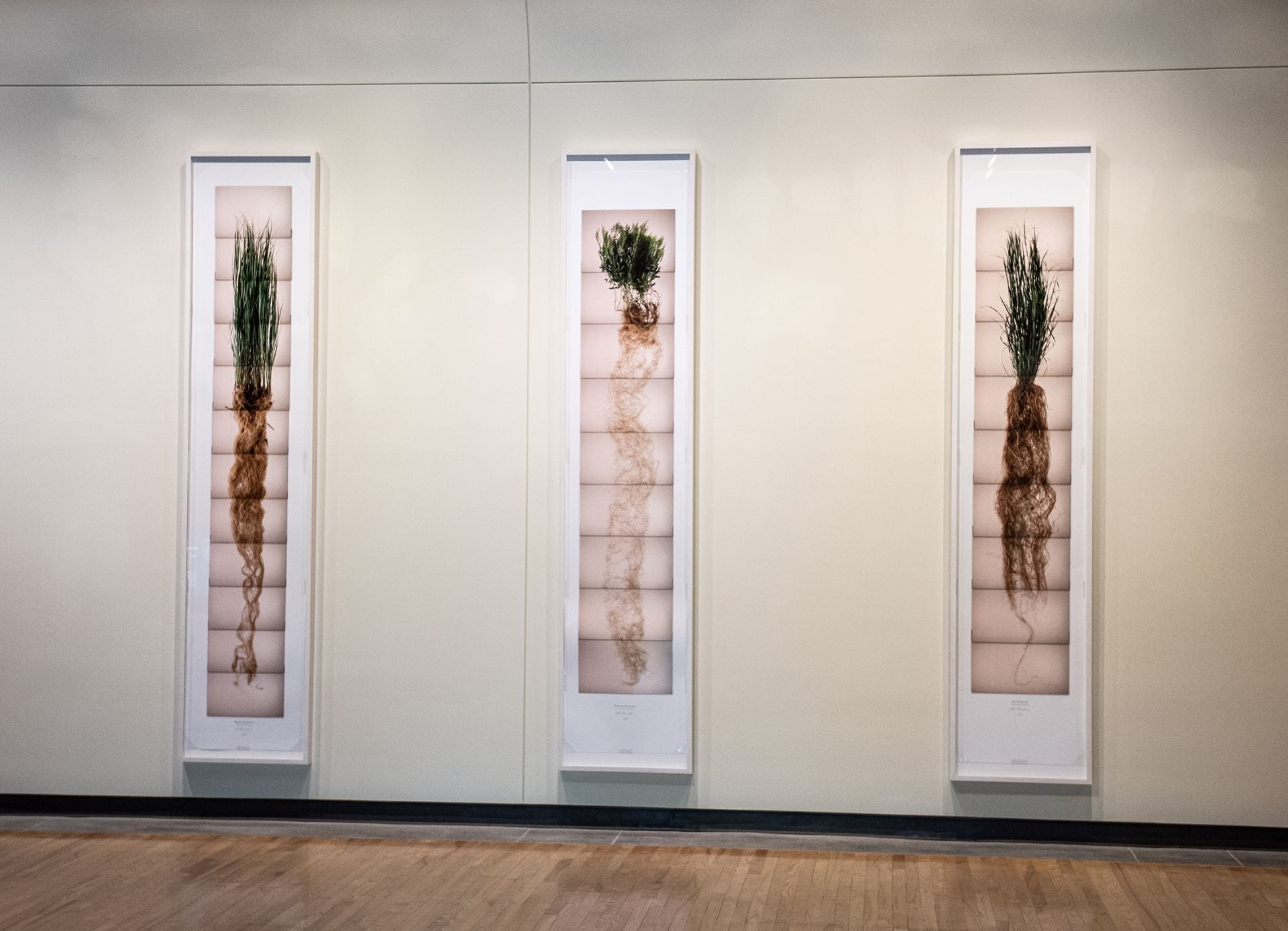
Left: James (Jim) C. Richardson, Prairie Cordgrass (spartina pectinada), 2014, printed 2016, from the series Prairie Roots, inkjet print, U12.2016
Middle: James (Jim) C. Richardson, Missouri Goldenrod (solidago missouriensis), 2014, printed 2016, from the series Prairie Roots, inkjet print, U9.2016
Right: James (Jim) C. Richardson, Big Bluestem (Andropogon gerardi), 2014, printed 2016, from the series Prairie Roots, inkjet print, U8.2016
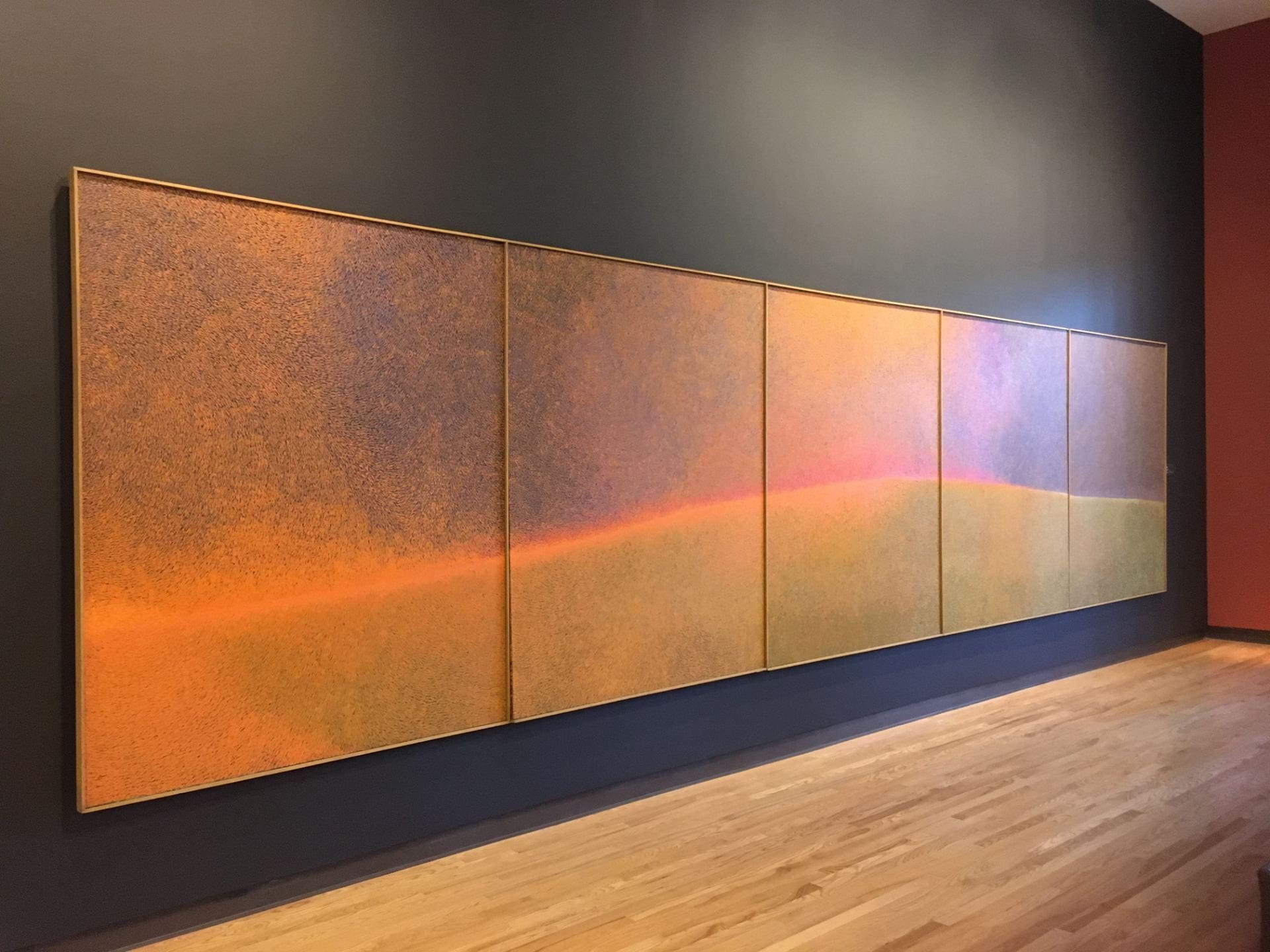
Joe DiGiorgio, Kansas Wheatfield, 1971, oil on canvas, 72 1/2 x 293 3/4 in., Kansas State University, Marianna Kistler Beach Museum of Art, gift of Helen DiLello and John DiLello, Jr., 2003.229
The Meadow, a native plant mini-park north of the museum, still serves as an outdoor learning lab for university and K-12 students.
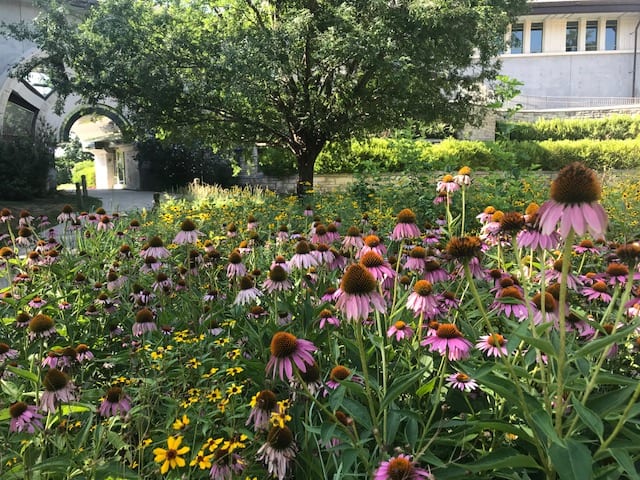 Enjoy the small prairie landscape right on K-State campus!
Enjoy the small prairie landscape right on K-State campus!
